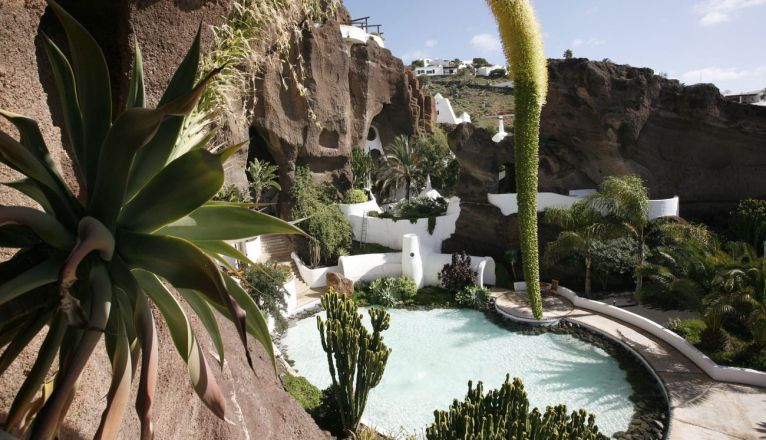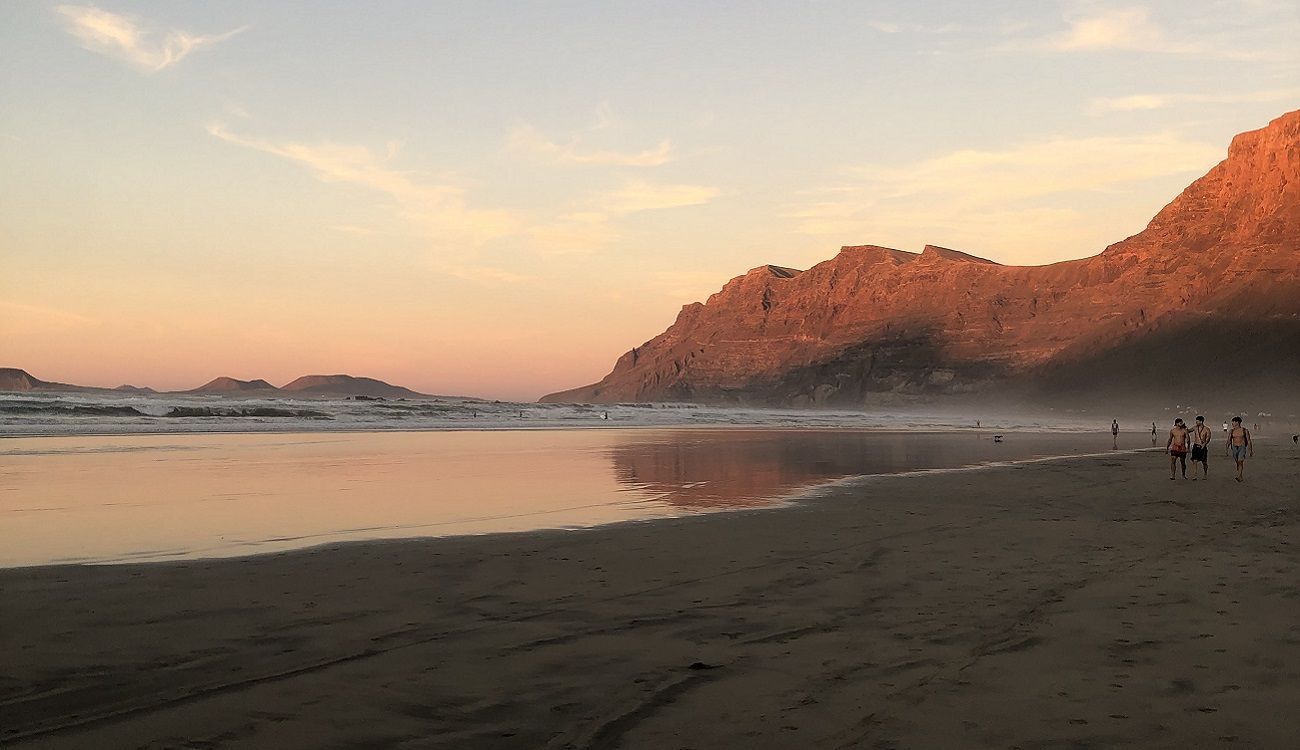In three days you will have enough time to visit virgin beaches, legendary caves, volcanoes and monuments full of history. You will get a fairly complete picture of the island, but in general it is recommended to spend between four and six days in Lanzarote to get to know it fully.
As many touristic sites are not for free, do not forget to buy a voucher that includes several of them to save money. The prices of the vouchers are around 35 euros per person, although the price will depend on how many sites you include in your voucher.
Day 1: the north
The first day will be focused on a route through the north of the island. The first stop will be at the Cactus Garden, in Guatiza, a botanical garden with more than 5,000 square meters of space and more than 7,000 cactus specimens, from all corners of the world.
If you arrive at 10:00 in the morning, at the opening hour, you will avoid queues. If you don't have the visit included in the voucher, the price is 6.5 euros for adults and half for children between 7 and 12 years old.
The day will continue in Jameos del Agua, in the municipality of Haría, and in Cueva de Los Verdes, about 15 minutes away by car. Both are located inside a volcanic tunnel generated by the eruptions of the Corona Volcano.
The Jameos del Agua receive their name from an inland lake formed by sea leakage, where a unique endemic species called the blind crab also lives. The place also has a restaurant, a swimming pool (in which you cannot swim) and an auditorium where famous singers sometimes give concerts.
Fleeing from the sun and heat during rush hour, the best option is to continue with a visit to the popular Cueva de los Verdes, which is located right in front of the Jameos del Agua. It is a seven kilometer grotto full of legends that used to be also a refuge for the islanders during pirate attacks during the 16th and 17th centuries.
History tells that it receives the name of Cueva de Los Verdes from the surname of a family that kept their cattle in the surroundings. The cave also has an auditorium with enviable acoustics.
During the 50-minute visit you will go through the different galleries, some of them up to 50 meters high and with a big surprise at the end that, as happens in Vegas, what happens in Cueva de los Verdes, stays in Cueva de los Verdes.
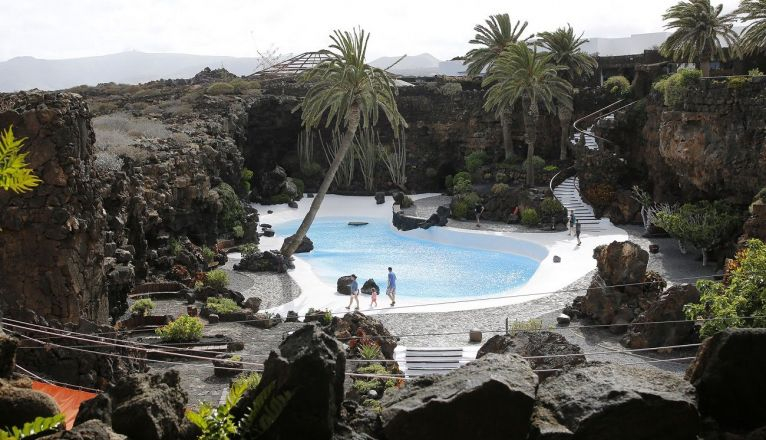
After an intense morning of sightseeing, you can enjoy typical Canarian dishes in the restaurants on the beach in the town of Arrieta, just 5 minutes away by car. You can taste some of the best fish in Lanzarote, fried cheese or the famous wrinkled potatoes with mojo sauce.
With a full stomach, we will go up to the top of the Risco de Famara by car to enjoy the Mirador del Río, a viewpoint located 400 meters high, which receives its name from the space of water that separates the island of La Graciosa from Lanzarote.
From its balcony and from the panoramic windows of its cafeteria, visitors can contemplate the Chinijo Archipelago, a group of islets formed by La Graciosa and the Roque del Este, Roque del Oeste, Alegranza and Montaña Clara islets.
The price is 5 euros for adults and half for children, although it is also one of the works by César Manrique included in certain vouchers.It is important to mention that it closes at 5:00 p.m., so it is convenient to calculate the time while you eat. In case you arrive late, you can always approach from the side to enjoy the views, but they are not as spectacular.
Once the mandatory tourist stops are over, you can spend the afternoon at el Caletón Blanco beach, in Órzola, one of the most unusual locations on the island. It is a beach where white sand mixes with the black of the volcanic rocks and the turquoise blue water of the sea.
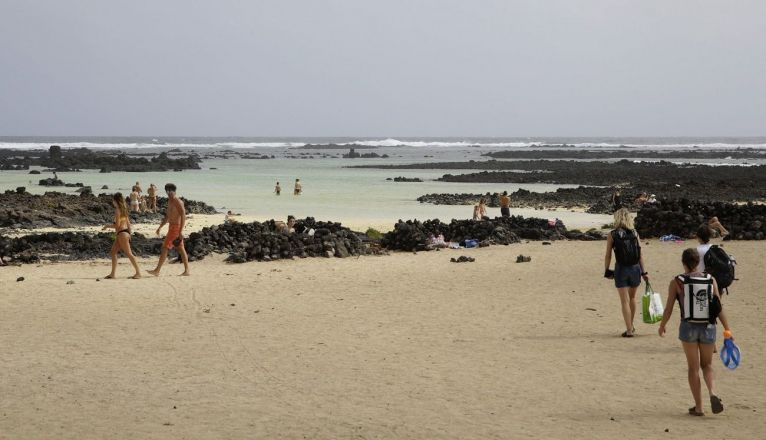
Day 2: the south
The second day begins at Timanfaya National Park, in the municipality of Yaiza, in the south of the island, so you can see one of the greatest attractions of Lanzarote: the volcanoes.
The park opens at 09:30 in the morning, but it is recommended to arrive half an hour earlier in high season. Once there, you can leave the car in the parking lot and enjoy the geysers, a route through the Montañas del Fuego by bus and the dishes made with the heat of the land at El Diablo Restaurant, a work by César Manrique.
At the end of the visit, the best is to continue south, towards Playa Blanca, where you will find several unforgettable places where you can take amazing photos, such as the small town of El Golfo. There you will find a viewpoint from where you can see a landscape taken from planet Mars. A black sand beach, reddish rocks and the Lago de los Clicos, better known as Lago Verde, which looks green because of the algae found on its bottom. Besides, it is a good place to eat seafood and typical Canarian food in front of the sea.
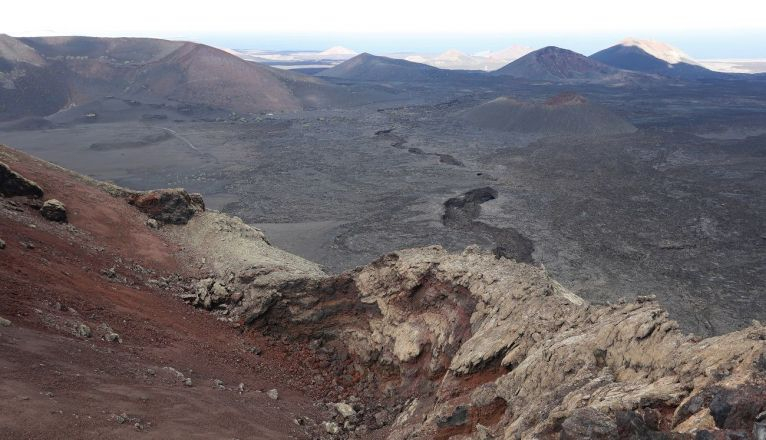
The next stop is Los Hervideros, volcanic cliffs where waves hit hard, generating a sound similar to that of boiling water. If you continue the road towards Papagayo, the next destination on the list, you will find the Salinas de Janubio, a rather photographic stop, where you can appreciate the salt flats of the island, full of colours and with the presence of numerous protected birds.
Once the route is over and after several hours of “tourism”, you can finally relax on the beaches and coves of Papagayo, at the southernmost point of the island. If you haven't eaten yet, you can do so at the beach bar at the top of the mountain, where you'll have a panoramic view of the two main coves.
It is important to mention that the entrance to Papagayo costs three euros and is done along a dirt road with some stones, so you will have to be careful when driving.
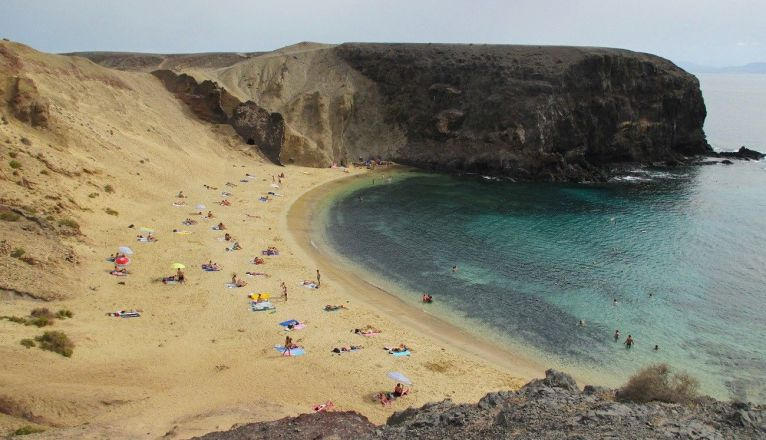
Day 3: Center
The last day in Lanzarote will be more relaxed, so you won't have to worry about the schedule or the prices, since th places we recommend are all free.
The walk begins around 10 in the morning in the center of the island, at Casa-Museo del Campesino, a work by César Manrique, in San Bartolomé. It is an emblematic place to take a photo, with its white walls and green doors.
Then head to the town of Masdache, where you will find a very peculiar palm tree called the "inclined" palm. On the road to La Geria, you will find a dirt road on the right that will take you to the base of Montaña Negra, where you will find the giant leaning palm tree.
It is important to mention that climbing the palm is not allowed. Once the corresponding photo session is over, we will continue the road until reaching Volcán del Cuervo, in Tinajo, a perfect place to take a family walk inside a volcano.
It is a circular hiking route, without slopes, that surrounds this peculiar dark-colored volcano 380 meters high. The round trip from the car park is approximately one hour and you can even enter its crater.
The volcanic route continues in La Geria, although in a more relaxed way and with a glass of wine in hand. It is a protected natural area of more than 5,000 hectares, where vines grow in holes excavated in the volcanic ashes.
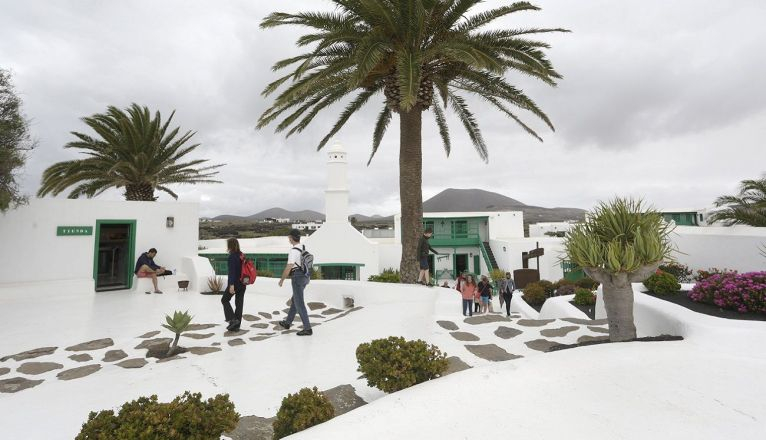
You can taste different wines from Lanzarote in the various wineries of La Geria, together with cheese, and enjoy some of the most unique views on the island. Later you can eat the famous wrinkled potatoes (papas con mojo), “party meat” (carne fiesta) or any other of the typical dishes in one of the teleclubs overthere, such as the one in Mancha Blanca or the one in Tao.
After lunch, it's time to chill on the popular Playa de Famara, under the imposing cliff. It is one of the best places to watch the sunset on the island, since the cliff tends to take on reddish tones that mix with the orange and pink tones of the sky.Famara is a beach with a lot of waves, so many surfers come there to enjoy the waves or just to have a walk. Furthermore, it also has an area of dunes that will remind you of the desert.
To end the day, on the way back from Famara you can stop at Lagomar, a cocktail bar and restaurant embedded in a cave in the town of Nazaret. With ambient music and dim lights, it is one of the most spectacular and different places to enjoy a glass of wine or a beer.
